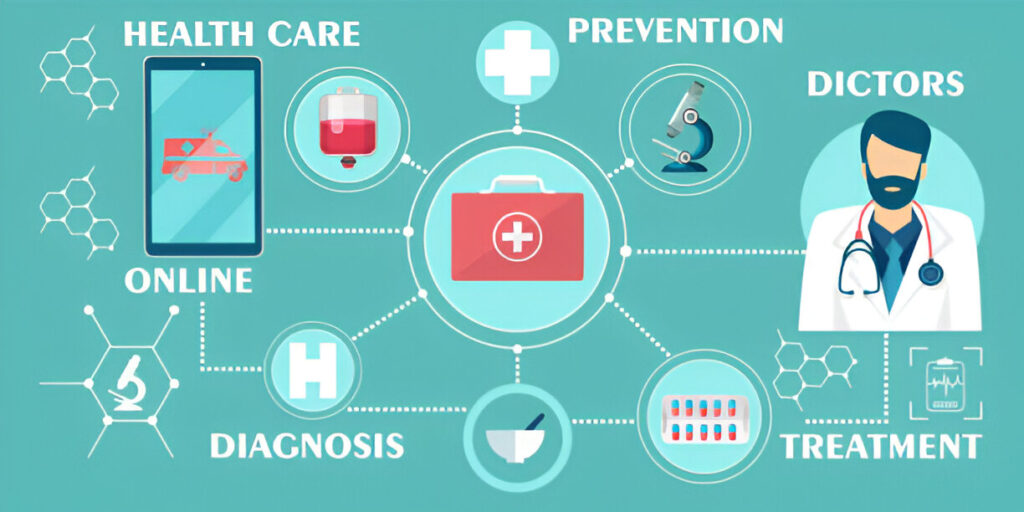Dental injuries are more common than many people realize. Whether caused by sports, accidents, or simple daily activities, damage to the teeth and supporting structures can be sudden, painful, and life-altering. These injuries not only affect oral function but can also impact a person’s appearance and confidence. Understanding the causes, preventive strategies, and immediate care protocols is essential for preserving oral health and minimizing long-term complications.
Etiology of Dental Injuries
The causes of dental trauma vary widely, but some patterns are well-documented:
- Sports-Related Accidents – Contact sports such as football, basketball, and hockey account for a large proportion of dental injuries. Athletes are at high risk of chipped, fractured, or completely knocked-out teeth due to collisions and falls.
- Falls and Accidents – Everyday mishaps like slipping in the bathroom, tripping while running, or car accidents are frequent contributors. Children and the elderly are particularly vulnerable.
- Violence and Interpersonal Trauma – Physical altercations or accidents involving blunt force can lead to severe oral injuries.
- Lifestyle and Occupational Risks – Certain jobs that involve heavy machinery or physical labor increase the likelihood of orofacial trauma. Similarly, habits like using teeth as tools (to open bottles or packages) can lead to avoidable damage.
Dental injuries often involve fractured enamel, pulp exposure, luxation (displacement of a tooth), or avulsion (complete loss). The severity depends on the force of impact and the individual’s oral condition at the time.
Prevention Strategies
While not all accidents can be avoided, many dental injuries are preventable with proactive care and protective measures.
- Mouthguards in Sports – Custom-fitted mouthguards are essential for athletes in contact and recreational sports. These devices distribute the impact force and reduce the risk of fractured or avulsed teeth.
- Helmets and Face Shields – In high-impact sports or hazardous jobs, additional protective gear is advisable. Combining helmets with facial shields provides an extra layer of safety.
- Safe Practices in Daily Life – Avoiding the use of teeth as tools, refraining from chewing hard substances like ice, and ensuring a clutter-free environment to prevent falls are practical habits.
- Routine Dental Checkups – Regular examinations help detect weakened teeth, gum disease, or restorative issues that might predispose an individual to more serious injury if trauma occurs.
Prevention should be tailored to lifestyle, age, and occupation. For children, especially those involved in sports, early education and protective devices can significantly reduce long-term risk.
Emergency Care for Dental Injuries
Immediate and proper action can determine whether a tooth is saved or lost. Emergency care should be guided by the type and extent of the injury:
- Tooth Fracture – If a tooth is chipped or fractured, the fragments should be preserved in milk or saline. A dentist may reattach the fragment or restore the tooth with bonding or crowns.
- Avulsed Tooth – Time is critical. A knocked-out tooth has the best chance of survival if reimplanted within 30 to 60 minutes. The tooth should be gently rinsed (not scrubbed) and kept moist in milk, saline, or even inside the cheek until emergency dental care is available.
- Luxation or Intrusion – If a tooth is displaced or pushed into the socket, patients should avoid manipulating it. Only a dentist should reposition and stabilize the tooth.
- Soft Tissue Injuries – Lacerations to lips, gums, or tongue require careful cleaning and sometimes sutures. Controlling bleeding with clean gauze and seeking prompt professional attention is vital.
The modern clinics emphasize emergency dentistry services to handle these cases efficiently, providing same-day interventions that increase the chances of preserving both teeth and oral function. Prompt assessment and treatment can also minimize pain and psychological stress for patients in crisis.
Long-Term Care and Rehabilitation
Emergency care is often just the first step. Restorative and rehabilitative treatments may follow, depending on the extent of damage. Root canal therapy, crowns, dental implants, or orthodontic adjustments are common in cases of severe trauma. Follow-up care also ensures that no hidden fractures or infections develop later. Psychological support may be beneficial for patients who experience anxiety or self-consciousness after visible injuries.
Dental injuries highlight the importance of prevention, quick response, and specialized care. In today’s environment, awareness of risk factors and the availability of rapid intervention make it possible to save teeth that might once have been lost permanently. With proper education, protective strategies, and reliable access to urgent care, individuals can safeguard their oral health against sudden trauma.
For individuals at heightened risk, particularly athletes, investing in prevention is critical. Learning about dental injuries in sports can help reduce the likelihood of long-term oral damage and ensure that protective measures are part of every game plan.



